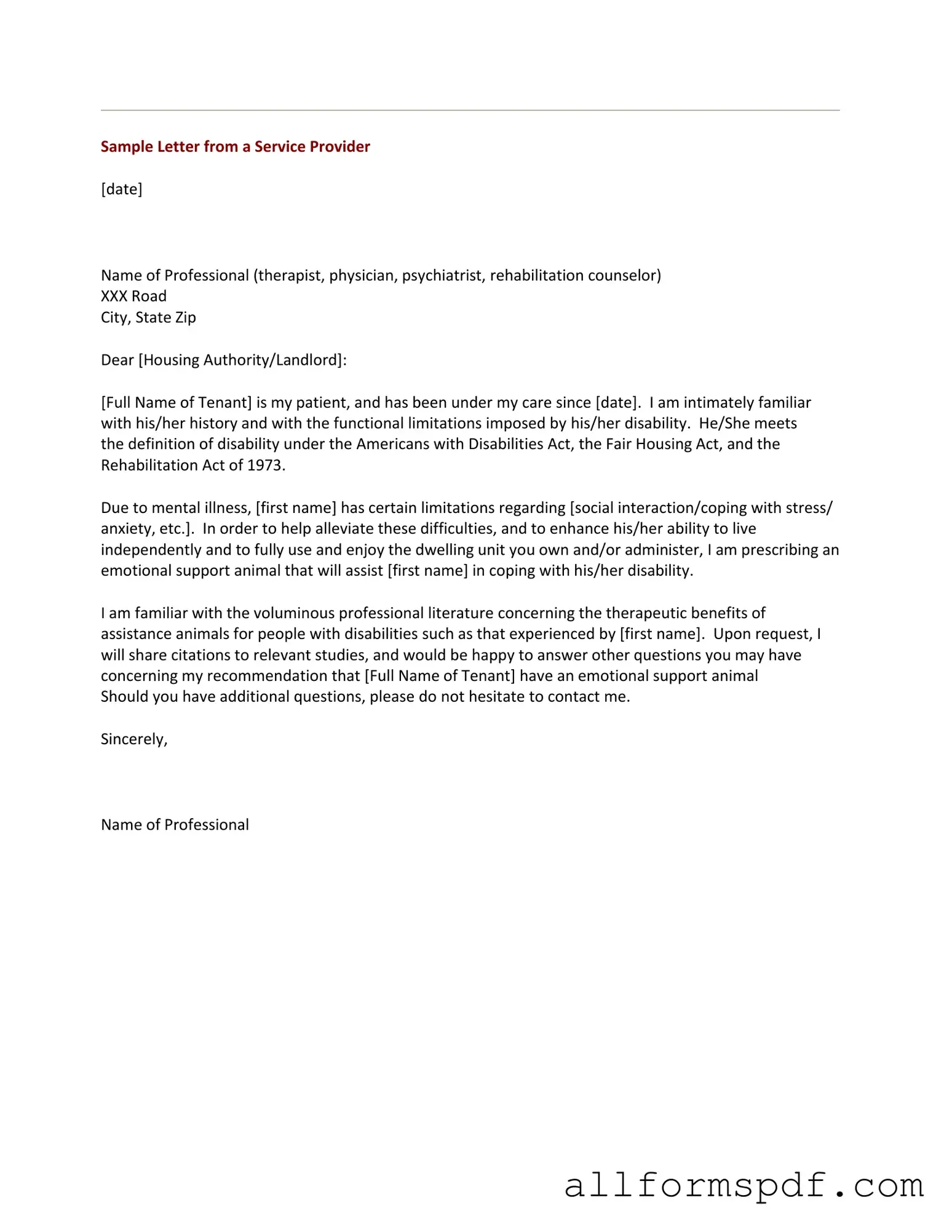When filling out the Emotional Support Animal (ESA) Letter form, many individuals make common mistakes that can lead to delays or complications. One frequent error is providing incomplete or inaccurate information. Applicants often overlook essential details such as their full name, address, or the specific type of animal. This omission can result in the letter being rejected or requiring additional follow-up, which can be frustrating for those in need of support.
Another mistake involves misunderstanding the role of an ESA. Some people mistakenly believe that any pet can qualify as an emotional support animal. However, the letter must be issued by a licensed mental health professional who confirms that the individual has a mental or emotional disability. Without this professional endorsement, the letter lacks validity, and the individual may not receive the accommodations they seek.
Additionally, applicants sometimes fail to include the necessary documentation. A valid ESA letter should be on the mental health professional's letterhead, include their contact information, and be signed by them. If any of these elements are missing, the letter may not be accepted by housing providers or airlines, leading to further complications for the individual and their animal.
Lastly, individuals often neglect to check the expiration date of their ESA letter. Most letters have a validity period, typically one year. If a letter is outdated, it may no longer be recognized, causing unnecessary stress for those relying on their emotional support animal. Keeping track of renewal dates and ensuring the letter remains current is crucial for continued support.
